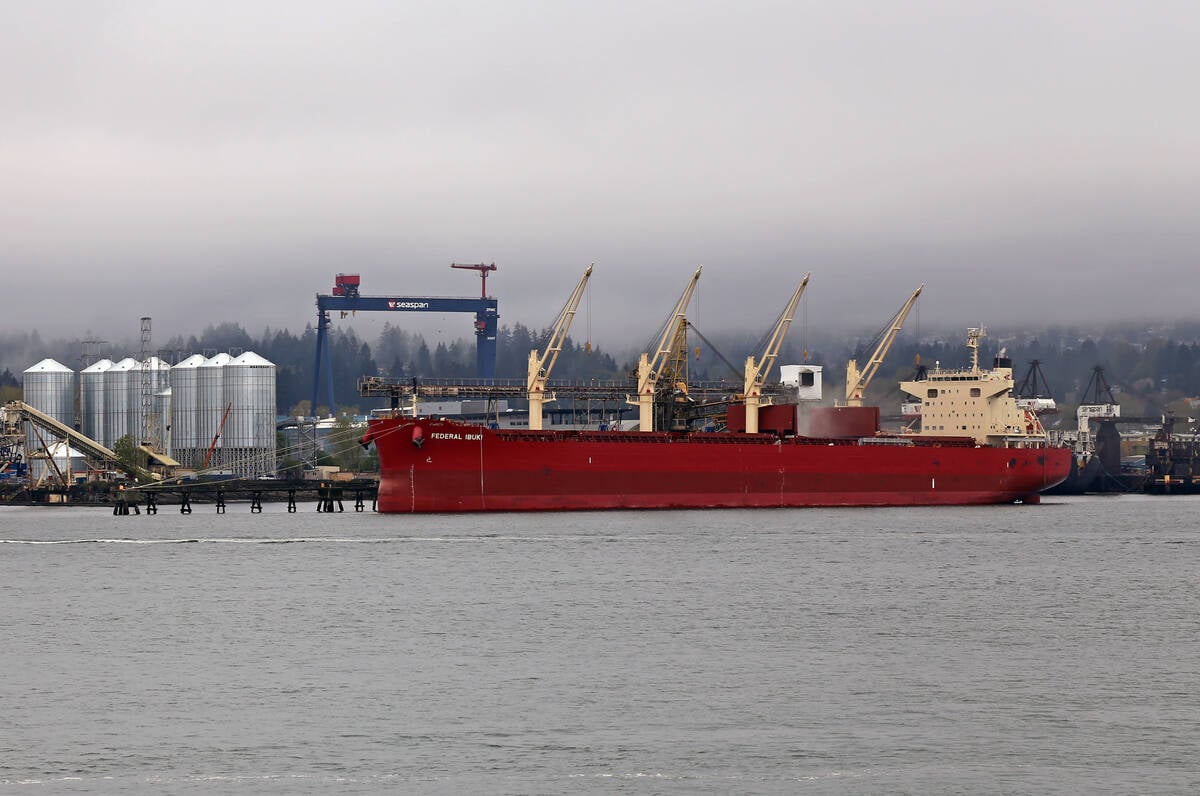In a few weeks, Canada’s largest biodiesel plant will jump 8.5 times in size and become an internationally competitive facility, producing 35 million litres annually.
Claude Bourgault of Rothsay, Canada’s largest animal and fat waste rendering company, plans to make a splash in the world market in July by loading a 500,000 litre tanker bound for Germany.
“Biodiesel is becoming a huge, new business worldwide and it’s time Canada was a player,” said Bourgault, general manager of the Montreal area facility.
Rothsay, owned by Maple Leaf Foods, has seven locations from Winnipeg to Newfoundland. It processes slaughter waste and used cooking fats from the food service industry.
Read Also

Vancouver port says it has improved efficiency
Grain movement has been strong at the Port of Vancouver due in part to a new centralized scheduling system.
The Montreal rendering plant serves Quebec and southern Ontario and converts animal and vegetable tallows into a variety of livestock feed additives and industrial chemicals.
Bourgault said demand for feeds made from animal byproducts has dropped since BSE was found in North America, causing animal fat prices to drop to less than $350 per tonne.
“This (biodiesel) provides us with a market for our (fat and oil) products. When the price of energy is high, we can compete quite well against fossil fuels, especially because we can charge a premium,” he said.
That premium will sustain Rothsay in its $15 million investment even when fossil fuel prices fall.
“We have markets in Europe. In Vancouver. In the United States. Many governments are mandating that public transport must use at least some biodiesel or renewable energy. Our pilot plant was based on use here in Montreal,” he said.
The Societe de Transport de Montreal operated more than 150 civic buses on 500,000 litres of blends of Rothsay biodiesel and fuel oil in 2002 and 2003.
“There is strong demand around the world for biodiesel,” he said.
The current expansion cost Rothsay about $8 million but it builds the base for a future lower-cost expansion that could double production to 70 million litres.
“We didn’t want to do that part until we have some more experience in the fuel markets. This lets us manage our risk on this expansion,” he said.
Converting fats into diesel fuel isn’t a new concept. Chemists were perfecting the simple technique more than 100 years ago.
But cheap fossil fuel supplies meant that recycled slaughter waste couldn’t compete economically until recently.
“Sixty percent of a steer is eaten in North America. We recycle the rest. Some livestock have high mortality rates. Two percent of pigs die before they are mature. We turn them into something else.”
If those materials were allowed to decompose in landfills, Canada’s greenhouse gas emissions would be staggering, Bourgault said.
“That produces methane and it is pound for pound 20 times more dangerous to our atmosphere than (carbon dioxide),” he said.
“We are taking it one step further and turning it into fuels that are renewable.”
Federal health regulations required that renderers build separate livestock waste handing lines in recent years. Rothsay also had to renew many of its facilities where the major components, cookers and evaporators, tend to last only 10 to 15 years. The plant renewals were expensive.
“Steel prices are up. New environmental regulations have come in. Some days it feels like everything we need to do business went up at the same time when a bunch of our products were going down (in price),” Bourgault said. “We spent $50 million in the last three years to upgrade our plants.”
The new markets for biodiesel may encourage Rothsay to proceed with the second part of the expansion in Montreal and to build biodiesel facilities at the company’s Dundas, Ont., and Winnipeg rendering plants. Montreal and Dundas both have access to international shipping, making export efficient. Winnipeg is close to American markets and environmentally conscious Vancouver.
Although Western Canada’s canola crop could also be used to make biodiesel, Bourgault said the price of canola oil keeps it off his list of raw ingredients.
“The oil we use makes up 80 percent of the final price. If we get $1.30 (per litre) before any taxes for our product, then we can’t be paying $850 (per tonne) for canola oil,” he said.
Green or damaged grades of canola are not a reliable resource, say company officials.
“I know that Milligan Biotech in Saskatchewan can use it for their products, but those are marketed as additives and sold at prices far above what you can charge for biodiesel. We operate on 20 or 30 cent margins (per litre) to cover our production costs,” he said.
















